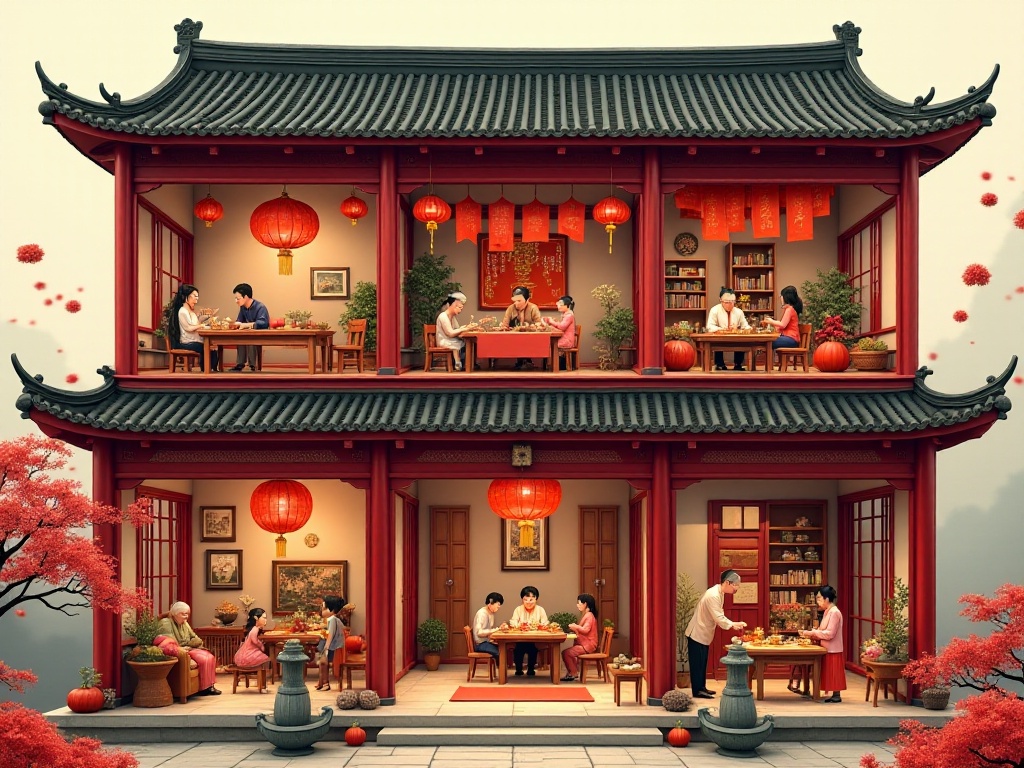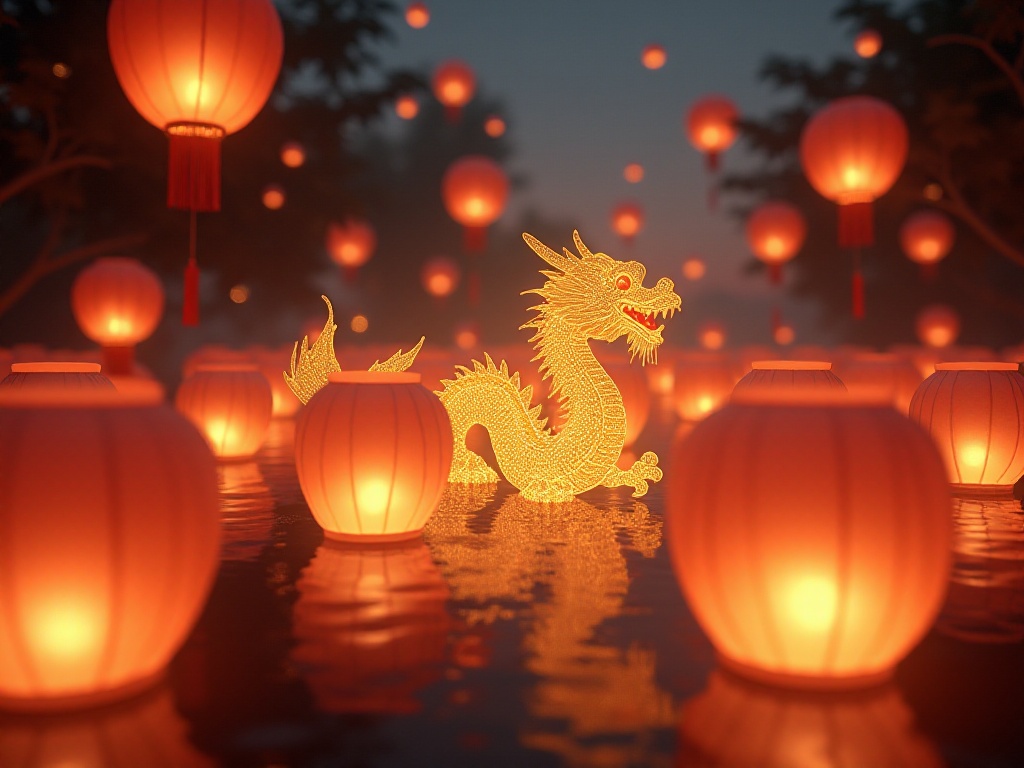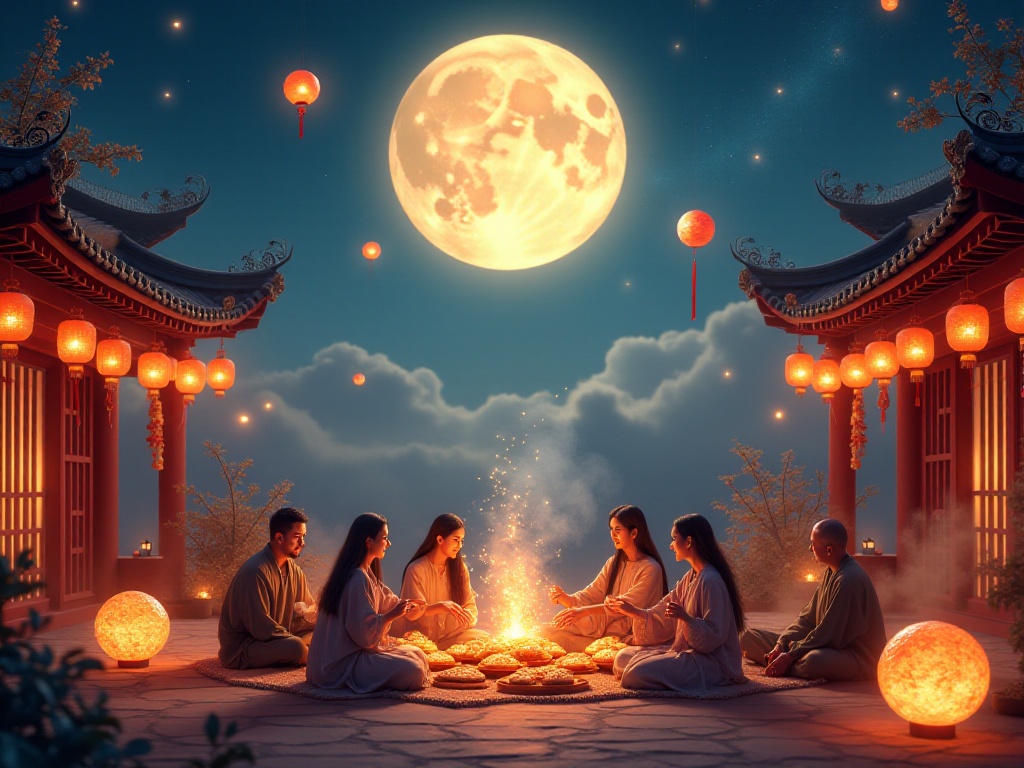Opening
That evening, while scrolling through TikTok, I came across a video: a little girl clumsily learning to make tangyuan (glutinous rice balls) with her grandmother. Her tender little hands kneaded the dough back and forth, yet she couldn't quite make it round. This scene instantly transported me back to my childhood. I remembered standing on a small stool, tiptoeing as I learned to make tangyuan with my mom. My hands never seemed to cooperate, making tangyuan that were either too big or too small, misshapen and not round at all. At such times, mom would laugh and say, "It's okay, these are artistic tangyuan, one of a kind!" Looking back now, I had no idea why we needed to make the dough round, let alone why we had to put filling inside. But as I grew older, I gradually understood that we weren't just making tangyuan – we were wrapping up love and anticipation.
Soul of the Festivals
A few days ago, while organizing my bookshelf, I found an old photo album. Looking at those yellowed photographs, each one seemed to tell a story about festivals. This reminded me of what a cultural scholar once said: traditional festivals are like a living chronicle, recording our nation's collective memory. Indeed, traditional festivals are far more than just holidays and food; they're like an invisible thread connecting Chinese people from all corners of the country.
Recently, I was on a business trip during the Mid-Autumn Festival. That night, sitting alone in my hotel room, I suddenly received a video call from my family. On the other side of the screen, my parents were setting up mooncakes and fruit in the courtyard, while my brother held his newborn daughter, everyone chattering away happily. At that moment, I suddenly realized: right now, aren't Chinese people all over the country and world engaging in the same reunion ritual? This sense of shared resonance gave me a powerful feeling of cultural identity.
According to the latest cultural heritage survey data, there are over 80 existing traditional festivals in our country, and each festival has spawned rich and diverse customs, with over 300 most representative festival customs alone. Behind these numbers lies the crystallization of generations of Chinese wisdom, a concentrated expression of our national cultural genes. Take the Lantern Festival for example: different regions have different ways of celebrating. Northerners eat yuanxiao, southerners eat tangyuan; some places enjoy lantern shows, others solve lantern riddles; some places have land boat parades, others perform dragon lantern dances. Each custom is like a shining pearl, strung together into a beautiful cultural necklace.
Memories of Spring Festival
Speaking of traditional festivals, Spring Festival is the most anticipated. Young people today might think Spring Festival starts from New Year's Eve, but traditionally, Spring Festival celebrations actually begin from the twenty-third day of the twelfth lunar month. During a recent video call with grandmother, she sighed, "Young people today are too casual about the New Year. Not like in our time, when we started preparing from the twenty-third of the twelfth month and celebrated all the way until the fifteenth of the first month."

The Code of Reunion
Last Lantern Festival, I posted a photo of my homemade tangyuan on social media with the caption: "Why are so many of our festival foods round?" This question immediately sparked a lively discussion. Some said it's because round shapes symbolize reunion, others said it represents completeness, and some joked that it might be because round shapes are easier to wrap. Later, I specifically researched some materials and found that in traditional Chinese culture, "round" indeed has special significance – it not only symbolizes reunion and completeness but also represents wholeness and harmony.
Think about it: our traditional festival foods – tangyuan for the Lantern Festival, mooncakes for the Mid-Autumn Festival, zongzi for the Dragon Boat Festival (though triangular on the outside, they're wrapped around something round) – aren't they all related to "roundness"? This reminds me of an interesting detail: whenever making tangyuan, mom always pays special attention to how round they are, saying that the rounder they are, the more complete life will be.
Data shows that during the 2023 Lantern Festival, national tangyuan sales reached 500,000 tons. This number is significant – it means countless families gathered together on this day, sharing this meaningful food. I particularly enjoy that moment of biting into a tangyuan, when the soft glutinous skin wraps around the sweet filling, like those hard-earned small moments of happiness in life.

Cultural Genes
Recently, I read a book on cultural studies that mentioned an interesting point: traditional festivals are like a huge cultural gene pool, passing down the essence of Chinese culture through various customs and rituals to generation after generation. This reminds me of my childhood, when elders would always tell stories and legends related to festivals. At the time, I thought they were just interesting stories, but now I understand how much wisdom about life and dealing with the world was hidden in those stories.
Research data shows that over 95% of Chinese people believe traditional festivals play an important role in maintaining family relationships and passing down culture. This number isn't surprising at all, because during festivals, we're not just enjoying food and holidays, but inheriting a way of life and values.
What's particularly interesting is that each place has its own unique way of celebrating festivals. Take Spring Festival for example: northerners like to eat dumplings, southerners prefer tangyuan; some places hang spring couplets, others hang lanterns; some places set off firecrackers, others perform lion dances. Statistics show that during Spring Festival alone, national dumpling consumption reaches 1 million tons. Behind this number is our shared aspiration for a good life.
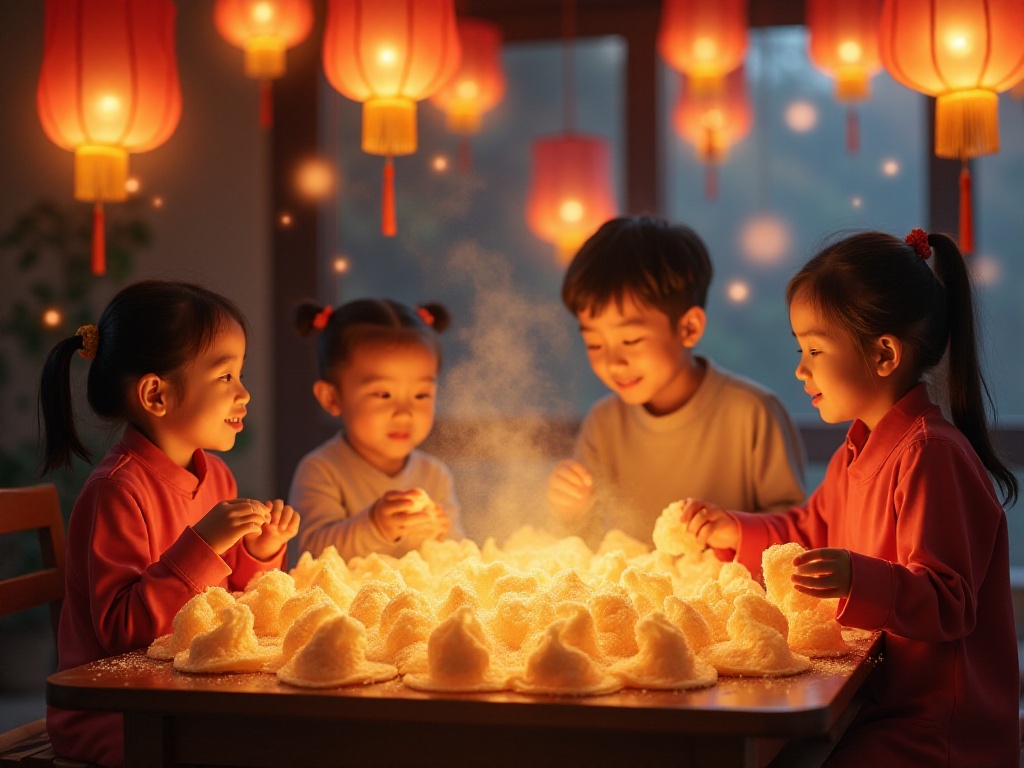
New Era, New Changes
Times are changing, and so are our ways of celebrating festivals. Now when you open your phone, you can see various trendy festival activities: some people livestream making tangyuan on TikTok, others send red packets in WeChat groups, and some create creative New Year greeting videos using AR technology. According to the latest survey, over 60% of young people choose to reunite with family through video calls during traditional festivals. This data makes one reflect on how technology has indeed changed our way of life.

Emotional Resonance
Whenever I think about festival moments, many warm scenes come to mind. I remember when I was young, every New Year's Eve, grandfather would take me to paste spring couplets. He would always lay the couplets on the table first, teaching me characters stroke by stroke, then let me help apply the paste. Although my hands would always get sticky, that sense of participation made me very happy. Now grandfather is old and no longer pastes spring couplets himself, but every year when I return home, he still guides me on how to paste them, saying this is tradition, it must be passed down generation by generation.
Looking to the Future
Facing the fast pace of modern life, many people worry that traditional festivals will gradually be forgotten. But I think as long as we put our hearts into passing them down, traditional festivals will surely find new vitality. The key is finding the balance between tradition and modernity, passing down traditional culture in ways that young people like.
Surveys show that over 80% of post-90s generation are willing to inherit traditional festival culture in innovative ways. This data is encouraging, showing that the younger generation hasn't forgotten tradition, they're just interpreting it in their own way.
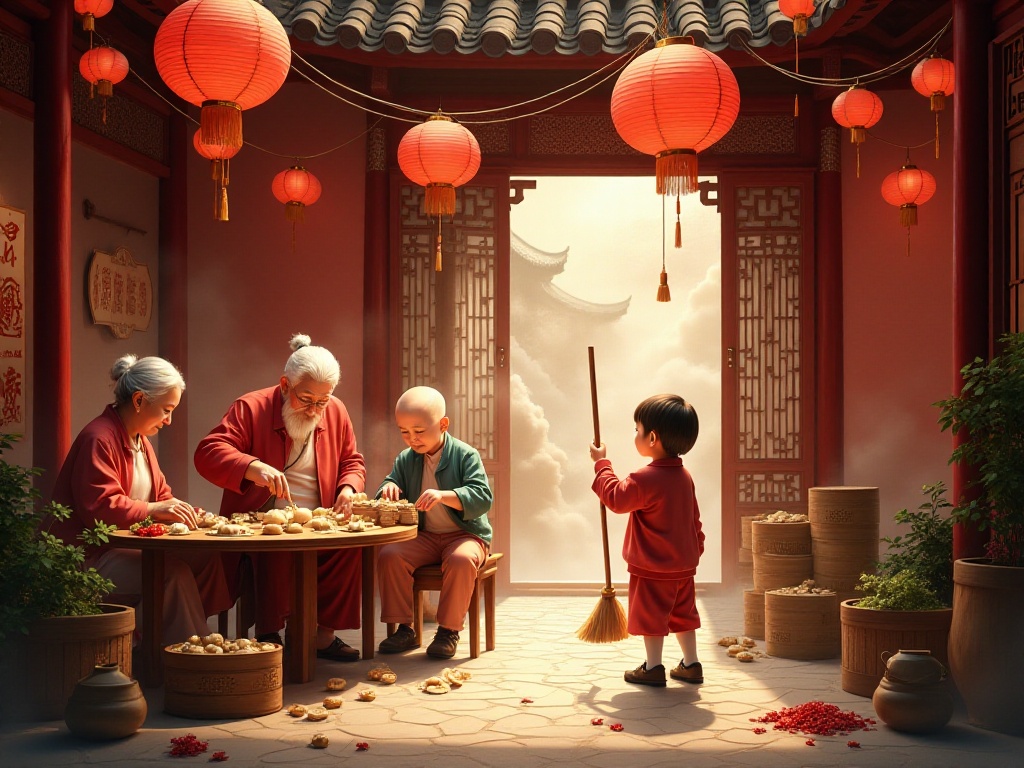
Conclusion
Writing to this point, I can't help but recall the old saying: "Missing loved ones more on every festival." Traditional festivals are precious because they allow us to pause in our busy lives, reunite with family, and dialogue with tradition. They're not just holidays, but bridges connecting past and future, bonds maintaining family ties, and carriers of cultural inheritance.
Next festival, why not slow down and savor the little moments. Whether it's a tangyuan, a hug, or a greeting, these seemingly ordinary things contain the most precious happiness. Let's together feel the warmth and emotion that traditional festivals bring us, and pass down this cultural gene from generation to generation.


